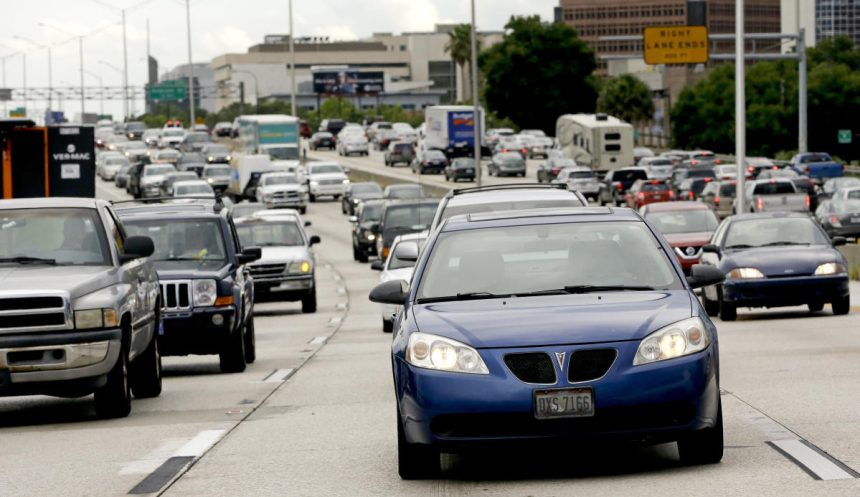Revolutionary Vehicle-to-Everything (V2X) Initiative: A Path Towards Safer Roads
Introduction to the V2X Vision
The US Department of Transportation has unveiled a significant national strategy aimed at enhancing road safety through advanced communication technology among vehicles. This initiative focuses on deploying vehicle-to-everything (V2X) systems, which allows cars to communicate not only with each other but also with pedestrians, cyclists, and traffic infrastructure. The objective is ambitious: to aspire towards zero roadway fatalities as part of its commitment to vehicular safety.
Alarming Statistics on Traffic Fatalities
Recent estimates from the National Highway Traffic Safety Administration indicate that 40,990 lives were lost in automobile accidents last year alone. Such staggering figures underline the urgent need for innovative solutions like V2X technology that can potentially decrease these incidents dramatically.
Understanding V2X Technology
V2X enables communication between vehicles and their surrounding environment, facilitating the exchange of critical information regarding location, speed, and road conditions. This system is especially useful under challenging visibility conditions such as heavy fog or sharp turns where conventional means of detection may fall short.
Strategic Deployment Plans by 2036
According to the National V2X Deployment Plan articulated by the DOT, achieving a widespread implementation will require a variety of technologies both in-vehicle and along roadsides capable of secure and efficient communication while safeguarding individual privacy. Smaller-scale implementations have already shown promising safety enhancements; advocates project that this tech could avert hundreds of thousands of accidents altogether while reducing collision impacts significantly.
The timeline outlined by DOT extends up until 2036 with aspirations including:
- Complete deployment across the National Highway System.
- Implementation in 75 major metropolitan areas where 85% of traffic signals support V2X.
- Availability in at least 20 different vehicle models equipped for this technology.
In addition to these long-term goals, an interim target has been set for using V2X solutions on approximately 20% of highways and within a quarter of all signalized intersections across key urban areas by 2028.
Challenges Ahead: Collaboration Among Stakeholders
Implementing this extensive plan poses considerable challenges given that various stakeholders must collaborate effectively — from regulatory bodies like the Federal Communications Commission overseeing spectrum allocation protocols to manufacturers producing compatible automotive components. Freight companies and app developers are also essential contributors toward realizing this vision.
Addressing Concerns Over Security and Costs
While there are legitimate concerns regarding cybersecurity threats tied to interconnected systems alongside financial implications tied to implementation costs—recent announcements from the Federal Highway Administration detailed nearly $60 million allocated towards advancing vehicle connectivity—experts maintain that successfully deploying V2X could save countless lives every year.
Secretary Pete Buttigieg heralded this deployment plan as pivotal for transforming transportation dynamics while simultaneously underscoring its life-saving potential as paramount for public well-being: “This strategy lays out our aspirations for nationwide adoption…”
Chairperson Jennifer Homendy from NTSB emphasized its importance further stating that effective execution could help avert up to 615,000 crashes annually—a figure highlighting how critical advancements like these can shape safer roads moving forward.
Moreover, past analysis conducted by NTSB found evidence suggesting many tragic fatalities over previous decades might have been avoided had similar technologies been enacted sooner; it has advocated diligently since 1995 for such initiatives among automakers who have steadily progressed toward developing comprehensive inter-car communications capabilities since then—including brands like Audi and Toyota who see immense potential particularly concerning autonomous driving capabilities fueled through enhanced real-time data sharing mechanisms.
Conclusion: Revitalizing Road Safety Through Innovation
Although attempts during earlier administrations faced hurdles—including efforts ensuring mandatory vehicle-to-vehicle features fell behind expectations—the current revitalization signifies hopeful progress ahead according industry leaders witnessing gradual shifts towards nationwide acceptance despite lingering uncertainties regarding regulations affecting varied market segments involved directly with electrified mobility ecosystems versus traditional transportation methods currently dominating our thoroughfares today.






